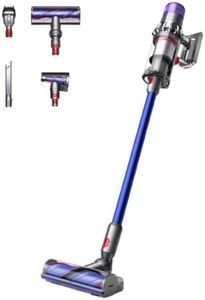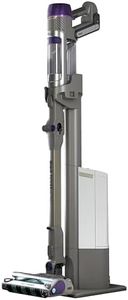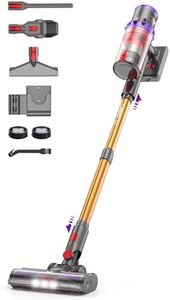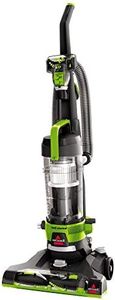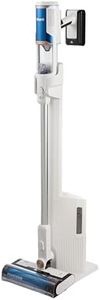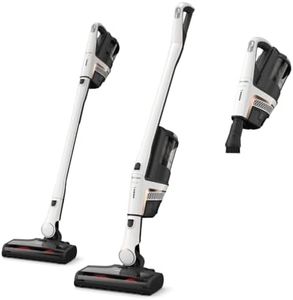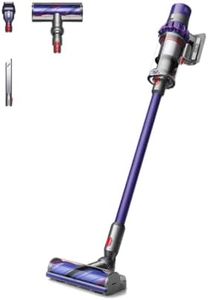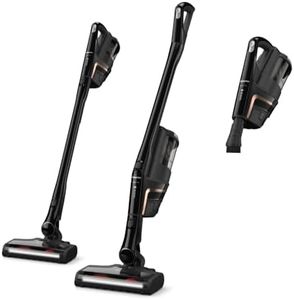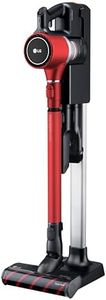We Use CookiesWe use cookies to enhance the security, performance,
functionality and for analytical and promotional activities. By continuing to browse this site you
are agreeing to our privacy policy
10 Best Upright Vacuums
From leading brands and best sellers available on the web.Buying Guide for the Best Upright Vacuums
Choosing an upright vacuum cleaner is all about matching the product's features to your cleaning needs and preferences. Because upright vacuums are commonly used for deep-cleaning carpets and handling large floor areas quickly, understanding the main specifications will help you avoid frustration and get better results at home. Keep in mind how often you clean, your home's flooring types, and whether you deal with pet hair or allergens. Let’s break down the essential specs to help you make a confident choice.Suction PowerSuction power refers to how strongly the vacuum can pull up dirt, dust, and debris from your floors and carpets. This is one of the most important specs, especially if you have thick carpets, pets, or lots of foot traffic. Suction power is usually measured in air watts or similar. Lower suction works well for hard floors or lighter jobs, while higher suction is better for deep-cleaning carpets and picking up stubborn debris. Assess what kinds of surfaces you clean most frequently—if you have mostly hard flooring or low-pile rugs, moderate suction should suffice, but for deep pile carpets or homes with pets, go for higher suction.
WeightWeight is simply how heavy the vacuum is—upright vacuums tend to be bulkier than other types, so this matters for ease of use, especially if you have stairs or need to move the vacuum between rooms. Lighter models (under 15 pounds) are easier to handle and maneuver, making them suitable for seniors or anyone with mobility concerns. Medium weight vacuums (15–20 pounds) offer a balanced experience, while heavier units (over 20 pounds) may have more power or capacity but can be tiring to use for long periods. Think about how much moving you do during cleaning, and whether you need something easy to push and lift.
Corded vs. CordlessCorded vacuums plug directly into a wall outlet and offer uninterrupted cleaning, which is great for large homes or longer sessions. Cordless models use rechargeable batteries, offering greater freedom to move, but they have limited run times (typically 20-60 minutes). If you often do quick clean-ups or need to reach places far from outlets, cordless might suit you better. For larger areas and heavy-duty cleaning, corded ensures you don't run out of power mid-job.
Dustbin/Bag CapacityThis tells you how much dirt the vacuum can hold before it needs to be emptied. Bagged vacuums collect dust in a replaceable bag, while bagless models have a reusable dustbin. Small capacities mean more frequent emptying, which can be annoying if you have a large home or shed a lot of pet hair. Larger capacities mean less frequent stops, but may make the vacuum heavier. Consider your home’s size and how much debris you expect to collect each time you clean.
Filtration SystemThe filtration system determines how well the vacuum traps dust, allergens, and microscopic particles. HEPA filters trap 99.97% of particles, making them ideal for allergy sufferers or households with pets. Basic foam or mesh filters do a reasonable job for everyday dust but are less effective for allergies. Ask yourself: Do you or your family have allergies or asthma? If yes, prioritize a vacuum with a HEPA or similarly advanced filter.
Attachments and ToolsAttachments like crevice tools, upholstery brushes, and motorized pet tools allow you to clean furniture, stairs, and hard-to-reach places more efficiently. More tools mean greater versatility, but also more things to store. If your cleaning routines go beyond floors—think curtains, sofas, car interiors—look for models with a variety of attachments. If you’ll mostly clean open areas, fewer extras may be all you need.
Adjustable Height SettingsHeight adjustability allows the vacuum to adapt to different carpet piles and hard surfaces by raising or lowering the brush roll. Having this feature means better cleaning performance and less chance of damage to delicate rugs. Fixed-height models are simple, while adjustable ones are more versatile, especially if you have a mix of thick carpets and hard floors at home. Consider the range of surfaces in your home—if it’s mostly one type, fixed may be fine, but for mixed flooring, adjustable is best.
Noise LevelNoise level measures how loud the vacuum is when running. While all vacuums make noise, some models are designed to run quieter, which is more pleasant for you, your family, and your pets. Quieter vacuums might have slightly less power, but the tradeoff can be worth it for shared living spaces or early-morning cleaning. If you’re sensitive to noise or share walls with neighbors, consider looking for a model labeled as low-noise.
